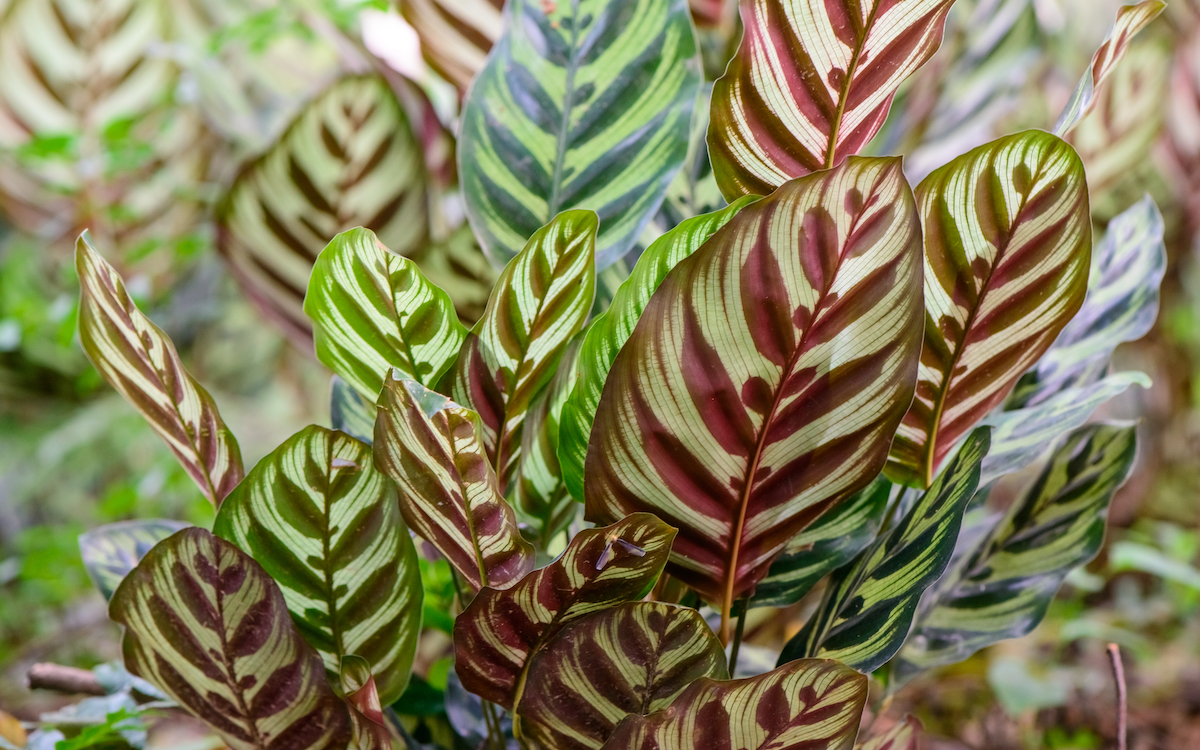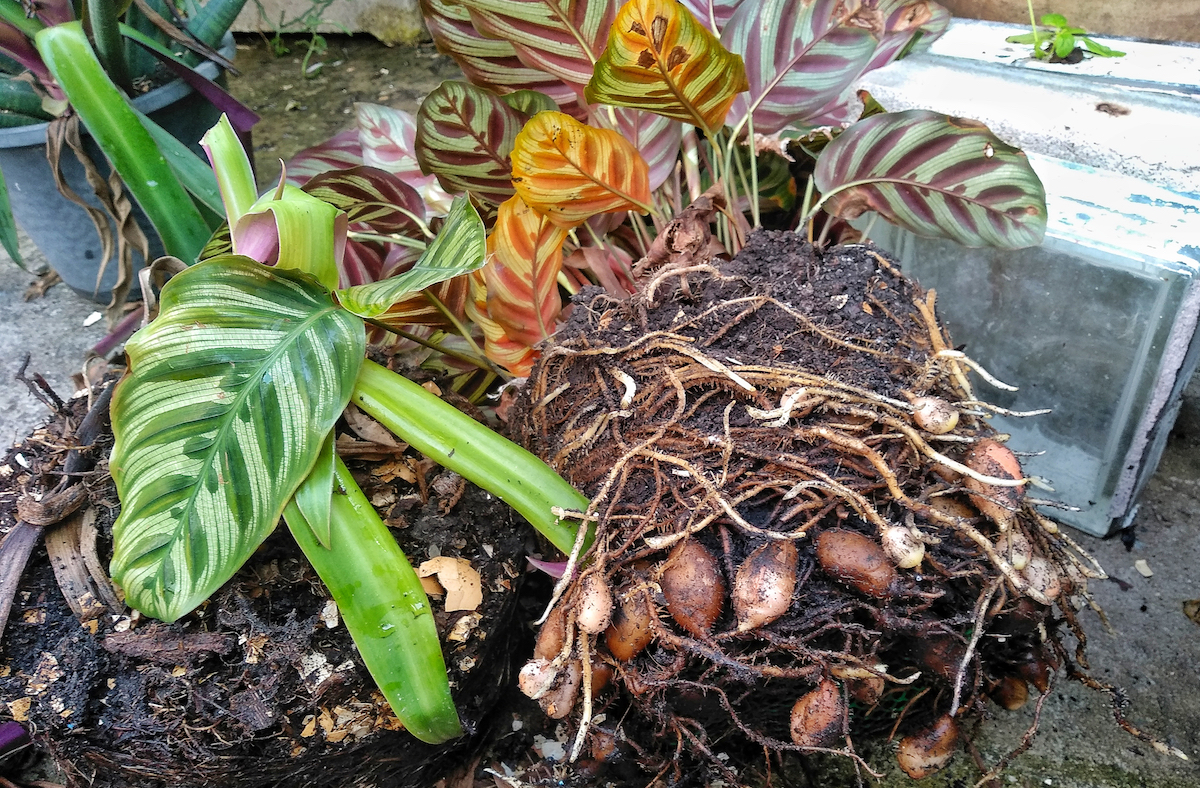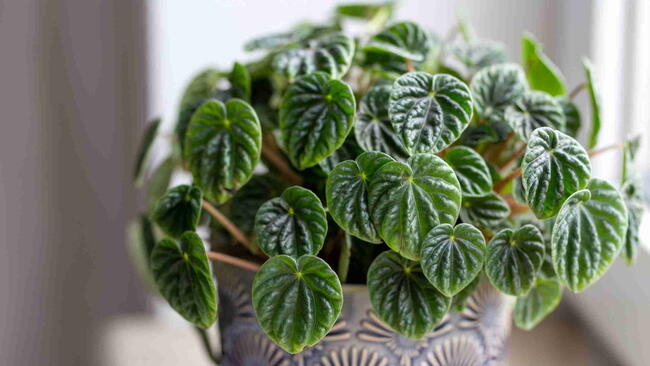
Caption
Varieties of Calathea plant leaves.
Growing and Propagating Calathea Indoors
Read Next
Fertilizer
Types
Options abound in the world of calathea! There are many varieties available at nurseries, greenhouses, and garden centers today, so no matter your color or pattern preferences, you will likely be able to find a calathea that catches your eye and matches your style.
- Rattlesnake plant, Goeppertia insignis (syn. Calathea lancifolia): This popular variety sports narrow, light-green leaves adorned with dark-green spots and reddish-purple undersides. The long and slender leaves have slightly wavy edges—an overall look that is whimsical but modern.
- Goeppertia orbifolia (syn. Calathea orbifolia): These elegant plants have large, wide, rounded leaves that are a pale, silvery green veined by darker green stripes.
- Peacock plant, Goeppertia makoyana (syn. Calathea makoyana): Another popular variety, the peacock plant (also known as “cathedral windows”) has oval leaves that end in a gentle point. The leaves are pale green with darker green edges and spots, and have reddish-purple undersides.

Gardening Products
Propagation
If your calathea is getting big or you want to expand your collection, you start a new plant! Calathea can’t be propagated by cuttings but by division. These are clumping plants, and there are usually several clumps. Divide when you repot in springtime.
The day prior, thoroughly water your plant to reduce transplant stress. Choose new pots with drainage holes and fill them in advance with potting soil, which is 2 parts coco coir to 1 part perlite. Tip: Put a coffee filter at the bottom of each pot to keep soil from falling through.
Gently loosen the mother plant from its container and tease apart separate clumps of rhizomes, which look like small bulbs. Be sure to brush off old soil and trim away any damaged plant sections. You may have to cut some smaller roots to separate the rhizomes from one another, but as long as each rhizome still retains some roots and at least one stem and leaf, they will spring back to life once repotted.
After planting in new pots, backfill with potting soil. Water thoroughly, allowing water to drain through. Keep your new potted plants warm and protected until they are established and actively growing in their new pots.










Comments